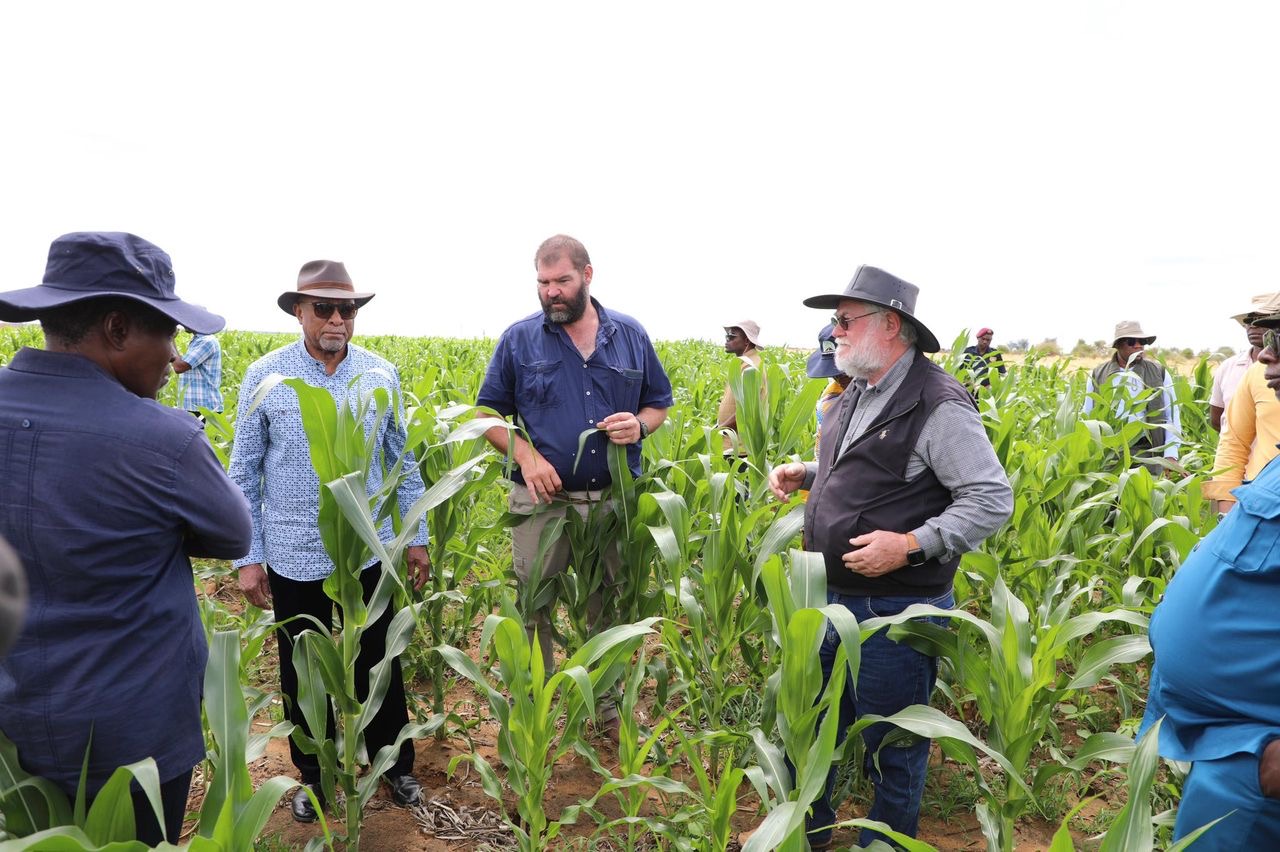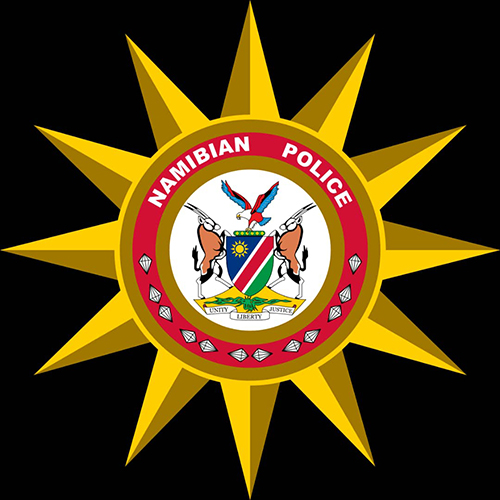RELIEF teams working in the Caprivi Region continue to evacuate people from isolated areas near villages – thought to have been cleared last week – as the second wave of floodwaters arrived at Katima Mulilo yesterday.
The level of the Zambezi River, as measured at Katima, has picked up since Thursday when it stood at 6,56 metres. NamWater measured it at 6,60 metres yesterday, although officials at the town said it was as much as 6,62 m.”The signs show that the second wave should be with us already.People north of us [in Zambia] report that there is water where there wasn’t earlier,” head of the delegation from the Prime Minister’s Office, Ndeutapo Amagulu, said yesterday.In an update on the latest river readings, the hydrology department of the Ministry of Agriculture, Water and Rural Development said: “The second wave has arrived at Katima Mulilo.”It said it was waiting for information from the Lukulu Station, upstream in Zambia, for an update on the situation there.To date, at least 2 567 people have been relocated to the four evacuation areas in the eastern floodplains.Several hundred more people have moved to safer areas of their own accord and continue to arrive at relocation camps each day.The Namibian Red Cross estimates that at least 80 per cent of those identified to have been under immediate threat have been taken to areas of safety.Amagulu told The Namibian that emergency teams were still receiving radio messages to pick up people from remote areas.He said the task force intended to undertake several surveillance flights over the next few days to ensure that no more people were in danger.The largest number of people – 1 800 – have been settled at Lusese.Chief Liswani III is likely to address people at this camp today to assess their situation and listen to their concerns.At the weekend, the Mafwe and Mayeyi chiefs were flown over the flood plains to familiarise themselves with developments in their region.Amagulu said it was important that they were a part of what was happening.With the flood waters now moving south to Lake Liambezi, villages south of Ngoma are also affected.Amagulu said that although forewarned, the situation might worsen as people there have said they were not yet ready to move.In the interim, an area north of Mutikitila has been identified to which they could be relocated should their lives be threatened by the spreading waters.Although the waters are said to be moving more slowly in this area compared to the eastern floodplains, the water has covered large areas that were previously dry.On Friday, a 15-year-old girl drowned on her way to school at Mutikitila when her canoe capsized.At Malindi, a six-year-old girl was found dead after fishing with friends.She had died from a snake bite by the time rescue workers reached her.The Red Cross Society, which has played a major role in caring for those displaced, yesterday made another appeal for assistance in the form of blankets, jerry cans and mosquito nets.Secretary General Razia Essack-Kauaria said that donors within the Red Cross system were responding well to appeals for assistance.So far, the Red Cross has provided relief items to about 78 households – an estimated 1 995 people.More special waterproof tents were also needed, Essack-Kauaria said, considering that people could spend at least another two months at these sites waiting for the waters to recede.The organisation said yesterday that it expected that a lot more work lay in store for them in the aftermath of the floods.People’s property would have been destroyed and their food security gravely affected.The number of orphans at reception areas with no one to care for them also continues to grow, creating a myriad of social concerns.”We don’t know if it is safe to have them all live together.There is no one to care for them.They finish all their food in one day thinking it is a party,” said Red Cross team leader Abel Augustinio.Management committees are now being established at the camps to deal with social issues.The Namibian Red Cross yesterday announced the appointment of the Prime Minister’s wife, Joan Guriras, as their Goodwill Ambassador.”As a country I think we could do more than we are to promote volunteerism,” Essack-Kauaria told the media.She said Guriras would be involved in raising awareness about the impact of HIV-AIDS on women and children.NamWater measured it at 6,60 metres yesterday, although officials at the town said it was as much as 6,62 m.”The signs show that the second wave should be with us already.People north of us [in Zambia] report that there is water where there wasn’t earlier,” head of the delegation from the Prime Minister’s Office, Ndeutapo Amagulu, said yesterday.In an update on the latest river readings, the hydrology department of the Ministry of Agriculture, Water and Rural Development said: “The second wave has arrived at Katima Mulilo.”It said it was waiting for information from the Lukulu Station, upstream in Zambia, for an update on the situation there.To date, at least 2 567 people have been relocated to the four evacuation areas in the eastern floodplains.Several hundred more people have moved to safer areas of their own accord and continue to arrive at relocation camps each day.The Namibian Red Cross estimates that at least 80 per cent of those identified to have been under immediate threat have been taken to areas of safety.Amagulu told The Namibian that emergency teams were still receiving radio messages to pick up people from remote areas.He said the task force intended to undertake several surveillance flights over the next few days to ensure that no more people were in danger.The largest number of people – 1 800 – have been settled at Lusese.Chief Liswani III is likely to address people at this camp today to assess their situation and listen to their concerns.At the weekend, the Mafwe and Mayeyi chiefs were flown over the flood plains to familiarise themselves with developments in their region.Amagulu said it was important that they were a part of what was happening.With the flood waters now moving south to Lake Liambezi, villages south of Ngoma are also affected.Amagulu said that although forewarned, the situation might worsen as people there have said they were not yet ready to move.In the interim, an area north of Mutikitila has been identified to which they could be relocated should their lives be threatened by the spreading waters.Although the waters are said to be moving more slowly in this area compared to the eastern floodplains, the water has covered large areas that were previously dry.On Friday, a 15-year-old girl drowned on her way to school at Mutikitila when her canoe capsized.At Malindi, a six-year-old girl was found dead after fishing with friends.She had died from a snake bite by the time rescue workers reached her.The Red Cross Society, which has played a major role in caring for those displaced, yesterday made another appeal for assistance in the form of blankets, jerry cans and mosquito nets.Secretary General Razia Essack-Kauaria said that donors within the Red Cross system were responding well to appeals for assistance.So far, the Red Cross has provided relief items to about 78 households – an estimated 1 995 people.More special waterproof tents were also needed, Essack-Kauaria said, considering that people could spend at least another two months at these sites waiting for the waters to recede.The organisation said yesterday that it expected that a lot more work lay in store for them in the aftermath of the floods.People’s property would have been destroyed and their food security gravely affected.The number of orphans at reception areas with no one to care for them also continues to grow, creating a myriad of social concerns.”We don’t know if it is safe to have them all live together.There is no one to care for them.They finish all their food in one day thinking it is a party,” said Red Cross team leader Abel Augustinio.Management committees are now being established at the camps to deal with social issues.The Namibian Red Cross yesterday announced the appointment of the Prime Minister’s
wife, Joan Guriras, as their Goodwill Ambassador.”As a country I think we could do more than we are to promote volunteerism,” Essack-Kauaria told the media.She said Guriras would be involved in raising awareness about the impact of HIV-AIDS on women and children.
Stay informed with The Namibian – your source for credible journalism. Get in-depth reporting and opinions for
only N$85 a month. Invest in journalism, invest in democracy –
Subscribe Now!










